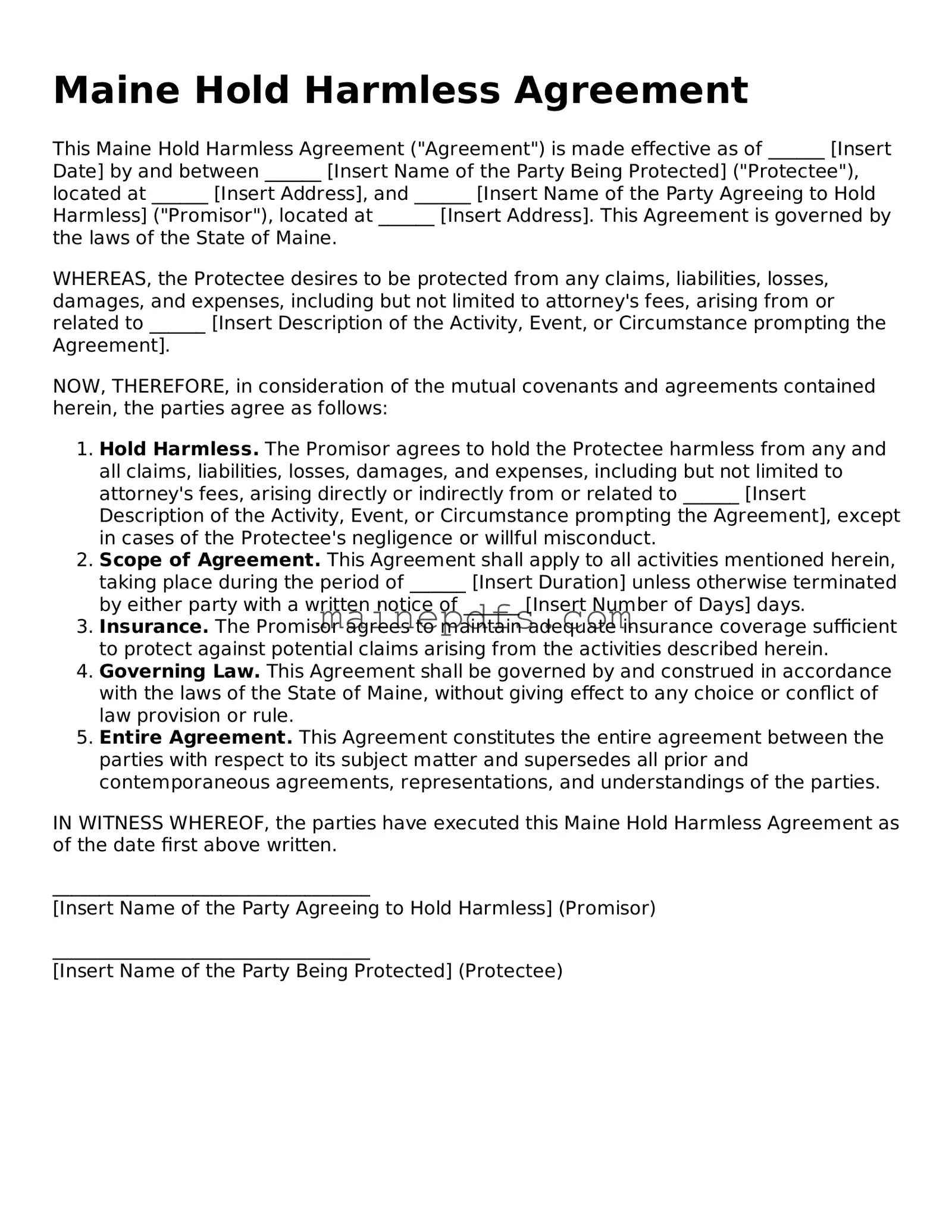Maine Hold Harmless Agreement
This Maine Hold Harmless Agreement ("Agreement") is made effective as of ______ [Insert Date] by and between ______ [Insert Name of the Party Being Protected] ("Protectee"), located at ______ [Insert Address], and ______ [Insert Name of the Party Agreeing to Hold Harmless] ("Promisor"), located at ______ [Insert Address]. This Agreement is governed by the laws of the State of Maine.
WHEREAS, the Protectee desires to be protected from any claims, liabilities, losses, damages, and expenses, including but not limited to attorney's fees, arising from or related to ______ [Insert Description of the Activity, Event, or Circumstance prompting the Agreement].
NOW, THEREFORE, in consideration of the mutual covenants and agreements contained herein, the parties agree as follows:
- Hold Harmless. The Promisor agrees to hold the Protectee harmless from any and all claims, liabilities, losses, damages, and expenses, including but not limited to attorney's fees, arising directly or indirectly from or related to ______ [Insert Description of the Activity, Event, or Circumstance prompting the Agreement], except in cases of the Protectee's negligence or willful misconduct.
- Scope of Agreement. This Agreement shall apply to all activities mentioned herein, taking place during the period of ______ [Insert Duration] unless otherwise terminated by either party with a written notice of ______ [Insert Number of Days] days.
- Insurance. The Promisor agrees to maintain adequate insurance coverage sufficient to protect against potential claims arising from the activities described herein.
- Governing Law. This Agreement shall be governed by and construed in accordance with the laws of the State of Maine, without giving effect to any choice or conflict of law provision or rule.
- Entire Agreement. This Agreement constitutes the entire agreement between the parties with respect to its subject matter and supersedes all prior and contemporaneous agreements, representations, and understandings of the parties.
IN WITNESS WHEREOF, the parties have executed this Maine Hold Harmless Agreement as of the date first above written.
__________________________________
[Insert Name of the Party Agreeing to Hold Harmless] (Promisor)
__________________________________
[Insert Name of the Party Being Protected] (Protectee)
